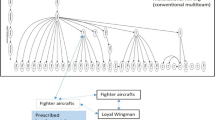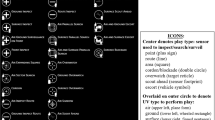Abstract
Human involvement with increasingly autonomous systems must adjust to allow for a more dynamic relationship involving cooperation and teamwork. As part of an ongoing project to develop a framework for human-autonomy teaming (HAT) in aviation, a study was conducted to evaluate proposed tenets of HAT. Participants performed a flight-following task at a ground station both with and without HAT features enabled. Overall, participants preferred the ground station with HAT features enabled over the station without the HAT features. Participants reported that the HAT displays and automation were preferred for keeping up with operationally important issues. Additionally, participants reported that the HAT displays and automation provided enough situation awareness to complete the task, reduced the necessary workload and were efficient. Overall, there was general agreement that HAT features supported teaming with the automation. These results will be used to refine and expand our proposed framework for human-autonomy teaming.
Access this chapter
Tax calculation will be finalised at checkout
Purchases are for personal use only
Similar content being viewed by others
References
Shively, R.J., Lachter, J., Brandt, S.L., Matessa, M., Battiste, V., Johnson, W.: Why human-autonomy teaming? In: Proceedings of the 8th International Conference on Applied Human Factors and Ergonomics (2017, this edition)
Goldman, C.V., Degani, A.A.: Team-oriented framework for human-automation interaction: implication for the design of an advanced cruise control system. In: Proceedings of the Human Factors and Ergonomics Society Annual Meeting, pp. 2354–2358. SAGE Publications (2012)
Lyons, J.B.: Being transparent about transparency: a model for human robot interaction. In: AIAA Spring Symposium Series (2013)
Endsley, M.R.: From here to autonomy: lessons learned from human-automation research. Hum. Factors 59, 5–27 (2017)
Onnasch, L., Wickens, C.D., Li, H., Manzey, D.: Human performance consequences of stages and levels of automation: an integrated meta-analysis. Hum. Factors 56, 476–488 (2013)
Meuleau, N., Plaunt, C., Smith, D.E., Smith T.B.: An emergency landing planner for damaged aircraft. In: Proceedings of the Twenty-First Innovative Application of Artificial Intelligence Conference, pp. 114–121 (2009)
Dao, A.-Q., Koltai, K., Cals, S.D., Brandt, S.L., Lachter, J., Matessa, M., Smith, D., Battiste, V., Johnson, W.W.: Evaluation of a recommender system for single-pilot operations. Procedia Manuf. 3, 3070–3077 (2015)
Lyons, J.B., Koltai, K.S., Ho, N.T., Johnson, W.W., Smith, D.E., Shively, R.J.: Engineering trust in complex automated systems. Ergon. Des. 24, 13–17 (2016)
Lyons, J.B., Saddler, G.G., Koltai, K., Battiste, H., Ho, N.T., Hoffmann, L.C., Smith, D., Johnson, W., Shively, R.: Shaping trust through transparent design: theoretical and experimental guidelines. Adv. Hum. Factors Robot. Unmanned Syst. 499, 127–136 (2017)
Sadler, G., Battiste, H., Ho, N., Hoffmann, L., Johnson, W., Shively, R., Lyons, J., Smith, D.: Effects of transparency on pilot trust and agreement in the autonomous constrained flight planner. In: IEEE/AIAA 35th Digital Avionics Systems Conference (DASC), pp. 1–9. IEEE (2016)
Lachter, J., Brandt, S.L., Battiste, V., Ligda, S.V., Matessa, M., Johnson, W.W.: Toward single pilot operations: developing a ground station. In: Proceedings of the International Conference on Human-Computer Interaction in Aerospace, Santa Clara, CA (2014)
Brandt, S.L., Lachter, J., Battiste, V., Johnson, W.W.: Pilot situation awareness and its implications for single pilot operations: analysis of a human-in-the-loop study. Procedia Manuf. 3, 3017–3024 (2015)
Lachter, J., Brandt, S.L., Battiste, V., Matessa, M., Johnson, W.W.: Enhancing Ground Support: Lessons from Work on Reduced Crew Operations. Cognition Technology & Work (in press)
Miller, C.A., Parasuraman, R.: Designing for flexible interaction between humans and automation: delegation interfaces for supervisory control. Hum. Factors 49, 57–75 (2007)
Prevot, T.: Exploring the many perspectives of distributed air traffic management: the multi aircraft control system: MACS. In: International Conference on Human-Computer Interaction in Aeronautics, HCI-Aero, pp. 23–25 (2002)
Strybel, T., Keeler, J., Mattoon, N., Alvarez, A., Barakezyan, V., Barraza, E., Park, J., Vu, K.-P., Battiste, V.: Measuring the effectiveness of human automation teaming in reduced crew operations. In: Proceedings of the 8th International Conference on Applied Human Factors and Ergonomics (2017, this edition)
Acknowledgments
We would like to acknowledge NASA’s Safe and Autonomous System Operations Project, which funded this research.
Author information
Authors and Affiliations
Corresponding author
Editor information
Editors and Affiliations
Rights and permissions
Copyright information
© 2018 Springer International Publishing AG (outside the USA)
About this paper
Cite this paper
Brandt, S.L., Lachter, J., Russell, R., Shively, R.J. (2018). A Human-Autonomy Teaming Approach for a Flight-Following Task. In: Baldwin, C. (eds) Advances in Neuroergonomics and Cognitive Engineering. AHFE 2017. Advances in Intelligent Systems and Computing, vol 586. Springer, Cham. https://doi.org/10.1007/978-3-319-60642-2_2
Download citation
DOI: https://doi.org/10.1007/978-3-319-60642-2_2
Published:
Publisher Name: Springer, Cham
Print ISBN: 978-3-319-60641-5
Online ISBN: 978-3-319-60642-2
eBook Packages: EngineeringEngineering (R0)




